Bhutan – land of the Thunder Dragon. This little land-locked Himalayan kingdom sharing it’s borders with India and China, evokes images of pristine natural beauty, traditional Bhutanese culture and an aura of mystery. Bhutan maintains a policy of “High Value, Low Impact” tourism, which means that it not only limits the number of tourists it gives visas to, the tourists (excluding those from India, Bangladesh and Maldives) have to pay a minimum daily amount of $250 (which includes accommodation, food and local guide). This year, due to hubby’s work commitments, we could travel only for one week as against our usual fortnightly holidays, and I really wanted to escape the heat and go to a place that was calm, serene and with cool weather. Bhutan was my choice and thankfully, husband and kids agreed.
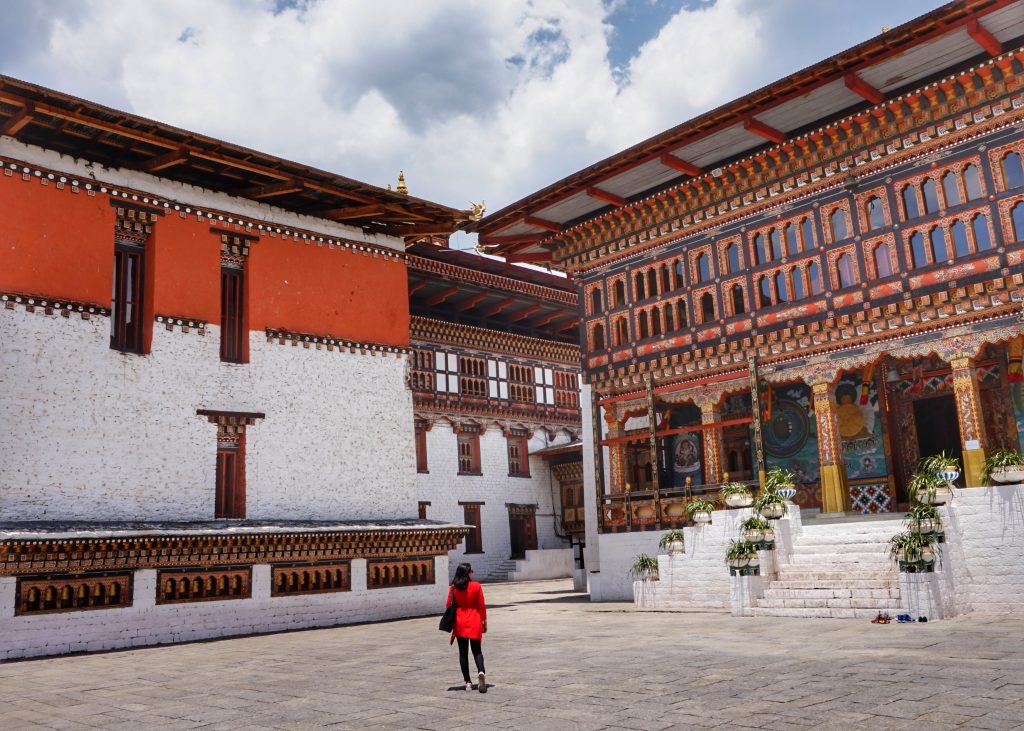
Before I share the itinerary, let me share some suggestions / tips with you based on my experience there:
- It is a government regulation that you must use a licensed Bhutanese tour operator to book your travel to Bhutan or one of their international partners.
- Indian nationals and those from Bangladesh and Maldives get a visa on arrival. For other tourists, the visa needs to be obtained in advance and there is a visa fee of $40 each.
- There are direct flights to Paro only from Delhi and Kolkata. Only two airlines fly to Paro – Druk Airlines and Bhutan Airlines. During the months of May and June, they do have a limited number of flights from Bombay too.
- While a guide isn’t mandatory for Indian nationals, it is highly recommended that you hire one since he would be able to share more details regarding the culture etc. We saw loads of Indian tourists who hadn’t hired a guide and who tagged along behind us listening to the explanations of our guide and bombarding him with questions.
- The Bhutanese tour operator will give you a tailor-made itinerary based on the places you plan to visit. This itinerary will be filled with touristy locations viz temples, monasteries and dzongs and, while they are all beautiful, it does tend to get a bit repetitive. You can however, tweak the itineraries based on your interests.
- The Bhutanese currency Nu is equivalent to the Indian Rupee. Indian rupees are widely accepted in Bhutan with the exceptions of Rs. 500 and Rs. 2000 notes.
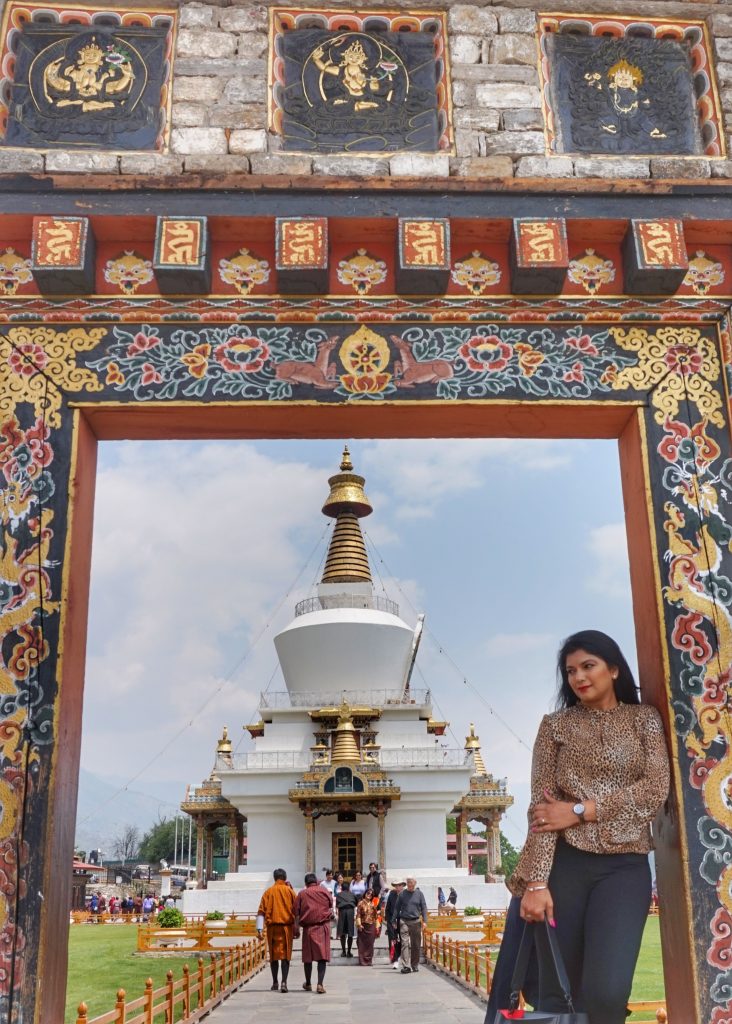
And now, let’s proceed with the itinerary. We did 4 nights in Thimphu and 2 nights in Paro, which wasn’t exactly an ideal itinerary. So based on my experience and the kind of itinerary I “wished we had planned” here is 8 days in Bhutan….
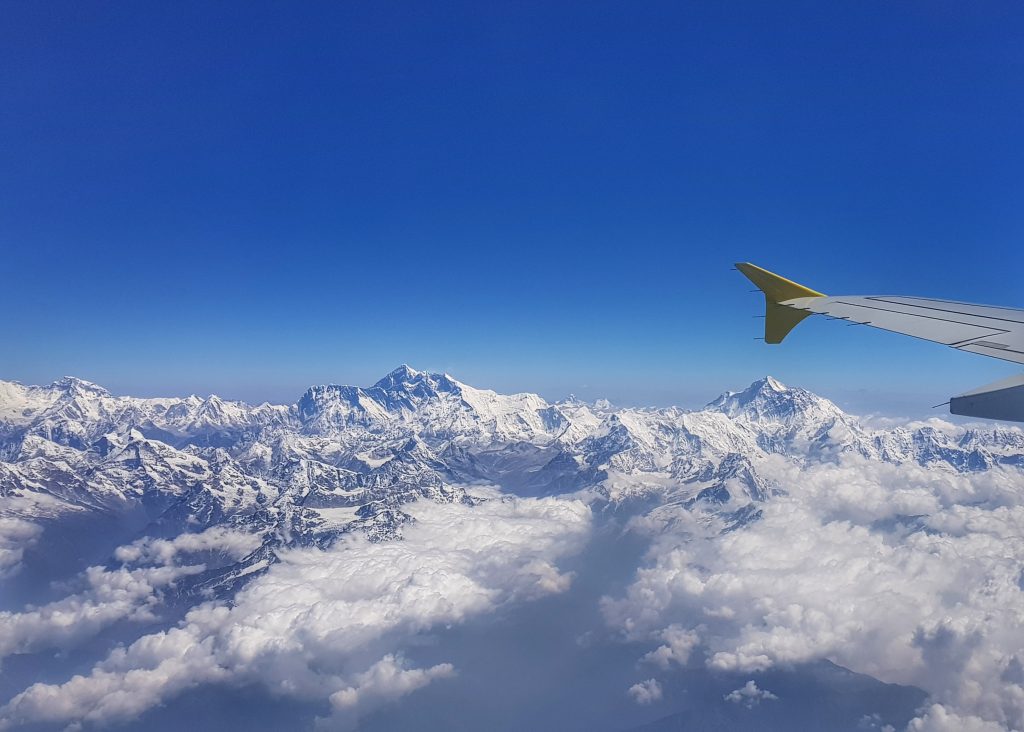
Day 1 – Thimphu
There is only 1 international airport in Bhutan, which is in Paro. And what an adorable airport it is! Just one little runway, surrounded by mountains and a traditional Bhutanese building. Take-off and landing at Paro airport are extremely difficult due to the surrounding high peaks and hence, there are only a handful of pilots skilled enough for this task. Once you land into Paro, you would find your guide and driver waiting for you outside the airport. We chose to drove straight to Thimphu, which is a 40 minute drive from Paro. As with all our trips, I always keep the first day for relaxing, more so for this trip because we had a sleepless night flying from Bombay to Delhi and a 6:40am flight from Delhi to Paro.
We checked into the Norkhil Boutique Hotel & Spa, had a leisurely lunch, and after a good nap went out to walk around Thimphu Town. We went to the Coronation Park, saw the football stadium where a match was being played and the Clock Tower Square before heading back to the hotel for dinner and a good night’s sleep.
Day 2 – Thimphu
Thimphu might be the most populated city of Bhutan but it is actually pretty small and you can complete all the interesting touristy sites in one day itself. For us, they were spread over 2 days and of those, some like the Textile Museum, National Library, nunnery and Takin Preservation Centre are totally avoidable. ( My son actually wanted to go to the Art and Craft School but the guide insisted that the Textile museum was better so we went to the latter. Needless to say, hubby and kids got bored there).
(Click on images to enlarge)
I would recommend starting the day with a visit to the Memorial Chorten followed by a visit to the Buddha Dordenma at Buddha Point. From there, head to the Changangkha Lhakhang Monastery and finish with a visit to the Tashi Chho Dzong. A Bhutanese hot stone bath and a spa massage are the perfect way to end the day.
Day 3 – Thimphu to Punakha
You could do a day trip to Punakha, but, based on my experience, I would advise you to stay there for at least 1 night, preferably two.
The drive to Punakha is about 2 and a half hours long and goes via the Dochu La pass. If you are lucky and it happens to be a clear day, you can see the Himalayas from there. It was a cloudy day with a bit of drizzle on the day we went so forget the Himalayas, we couldn’t even see the valley or the neighbouring mountain! At the Dochu La pass, there is also a monument with 108 Stupas. Because it was a cloudy, foggy day, we decided we would visit the 108 Stupas on our way back in the evening hoping that the weather would have cleared by then and we would get to see the Himalayas. In reality though, it was late evening by the time we reached there but the mist and darkness just added to the mysterious ambience of the 108 Stupas.
(Click on images to enlarge)
We reached Punakha around noon, visited the Dzong (which you could actually do the next day along with the fertility temple) and went straight for river rafting. Since we had kids with us, the driver recommended we do rafting on the Mo Chhu River since the rapids there are gentler. We opted for the 13km rafting (you can also choose the shorter 8km rafting). The rafting was an absolutely wonderful experience and the boys even opted for a little swim in the river. Not that it lasted longer than a couple of minutes because the water was absolutely freezing! After rafting, the guide and driver took us to a quaint little place, Traditional Cuisine House, in Punakha for a late lunch where we had a very simple and rustic, but delicious vegetarian food.
Day 4 – Punakha
By the time we finished lunch the previous day, it was already late evening and the guide warned us that by the time we reach the Fertility Temple, it would be shut. We insisted we wanted to go there and then, were told that the drivable road to the temple was under repairs. Which meant a one hour walk through the paddy terraces of Punakha – a unique experience indeed. Of course, when we reached the temple, it was indeed shut but we saw the young monks playing football there. Another long walk back to our parked car through the paddy fields, made messier by the rain that had started. (Not only did we all get soaked, my suede boots got ruined too). So my advice would be to enjoy a leisurely evening in Punakha, stay there the night and visit the Fertility Temple on Day 4. That along with the Punakha Dzong and the suspension bridge would make for a lovely day in Punakha.
(click on images to enlarge)
Day 5 – Punakha to Paro
The drive to Paro is a little over 3 hours so I would suggest going straight for lunch to the Namgay Artisanal Brewery. This lovely little brewery has a wonderful location and an al-fresco seating area overlooking the Paro Airport. They offer brewery tours (which include tasting) or just a tasting of the 7 beers that they brew in-house. But even if you don’t want to opt for either, this is a really nice place for lunch (nice options for vegetarians too) and coffee as well.
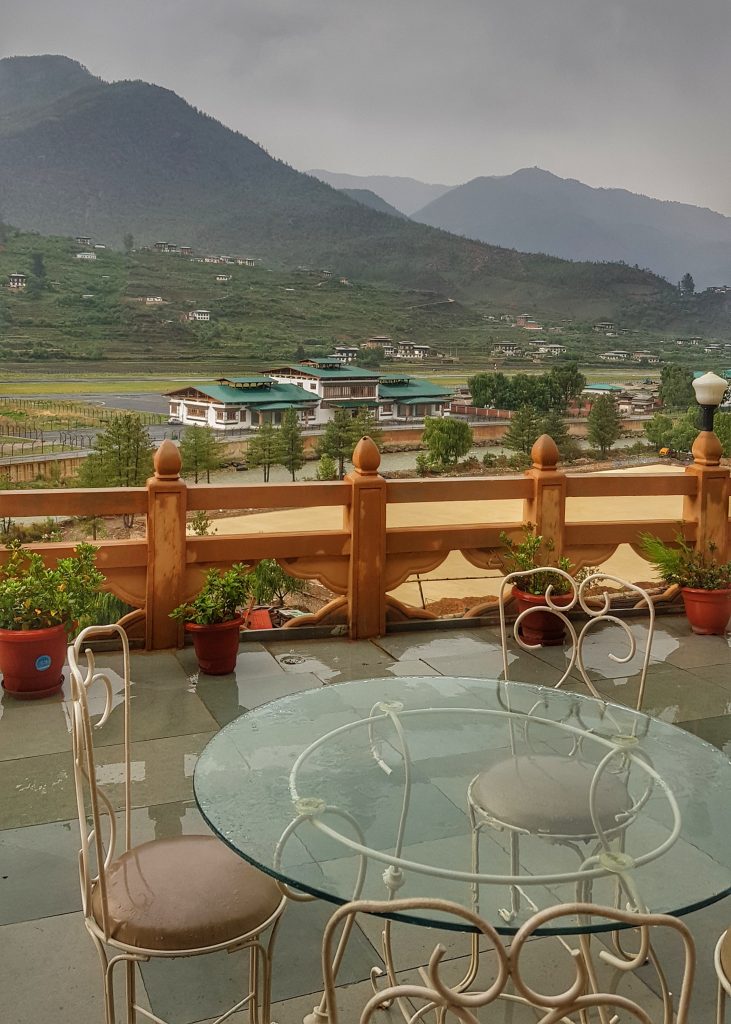
You can then either explore the little town of Paro or check into the hotel and go for a swim (if you’re staying at the Le Meridien Paro which has a great indoor heated pool – highly recommended).

Day 6 – Paro – Tiger’s Nest Trek
The Tiger’s Nest Monastery has been mentioned as a must-do for nearly everyone visiting Bhutan. I admit, it is quite a marvel, situated on a steep mountain cliff with no proper road to reach there except for a difficult mountain trek. However, the trek is by no means an easy one – unless you are the kind who goes on frequent hikes and treks. It took us 3 hours to reach the Tiger’s Nest Monastery, about half an hour to see it (cameras aren’t allowed inside), and another nearly 3 hours downhill.
(click on images to enlarge)
While I admit that the Tiger’s Nest is a once-in-a-lifetime kind of unique experience, I beg to differ from the “must-see, very spiritual” kind of popular opinion. Yes, this might sound a bit controversial but I honestly did not feel that the actual monastery was worth the trek. Let me give you my views for this statement. Firstly, Tiger’s Nest is no longer an actual monastery; the monks have shifted to a smaller monastery further ahead on the mountain and tourists aren’t permitted there. Secondly, if you had any kind of image of a “monastery” in your mind – meditation rooms for the monks, spartan living areas etc – let me assure you, you will see nothing of the sort here.
What you will see is a cluster of small temples, similar to the other temples you would have seen in Thimphu, Punakha and Paro. Each small temple is packed with 3-4 groups of tourists with their respective guides explaining to them the history of the temple in their language? Would I call this spiritual? Nope. To me, it felt very touristy and commercial and so, after seeing 3 temples, we decided to head back down. Honestly, being an Indian (and a Jain) I have seen many more temples that are exemplary works of architecture and that have such a calm and peaceful aura that they do feel spiritual. To trek on a mountain for 3 hours only to see small tourist-filled temples instead of an actual monastery felt like a big let down to me. But hey, this is just my personal opinion, and, as mentioned before, the trek and the views from the mountain are a once-in-a-lifetime experience. I am stating my views here to help you make a more informed decision whether you want to visit Tiger’s Nest or not.
By the time you are done with the trek, you would be too exhausted to do anything, so I would just advise you to get to the hotel and soak in a hot bath, go for a spa if you can or some steam/sauna to relax those tired muscles.
Day 7 – Paro
We regretted not having enough time to explore the pretty town of Paro, especially the river front, since we flew back on the 7th day. If I were to do my trip all over again, I would keep this day just for rest and relaxation – to enjoy a spa or to sit on the terrace overlooking the river or to shop for Bhutanese souvenirs to take back home.
Day 8 – Fly Back Home
And that would be my ideal 7 night 8 day itinerary for Bhutan. There are other beautiful areas of Bhutan too, like Phuentsholing and Bumthang, but since I haven’t visited those, I can’t offer any opinions on those. I do hope this itinerary (and the few suggestions I have offered) are helpful to you. Let me know if you have any more queries and I shall try my best to answer them.

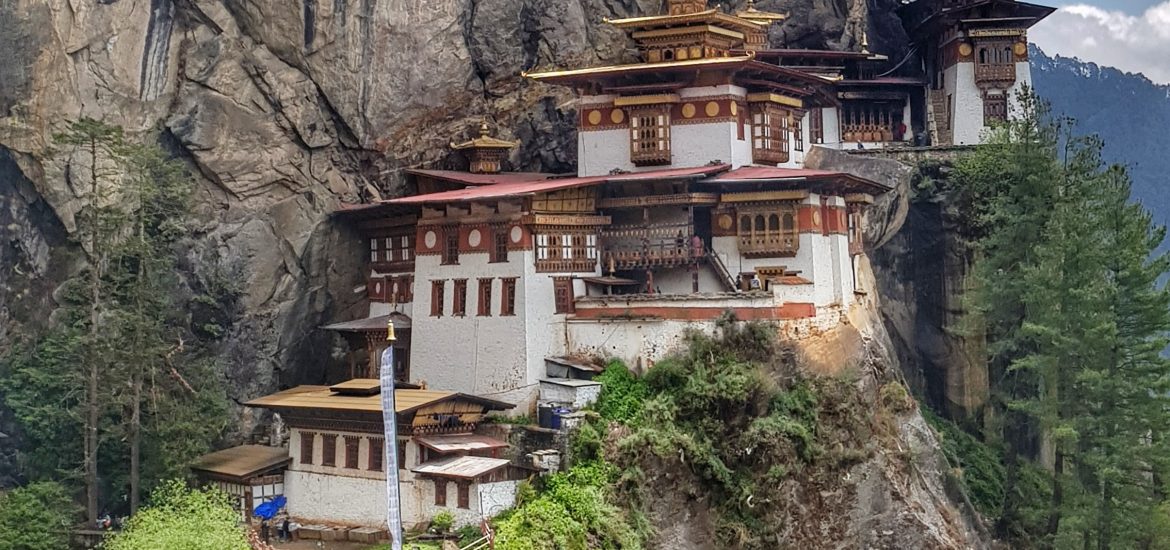
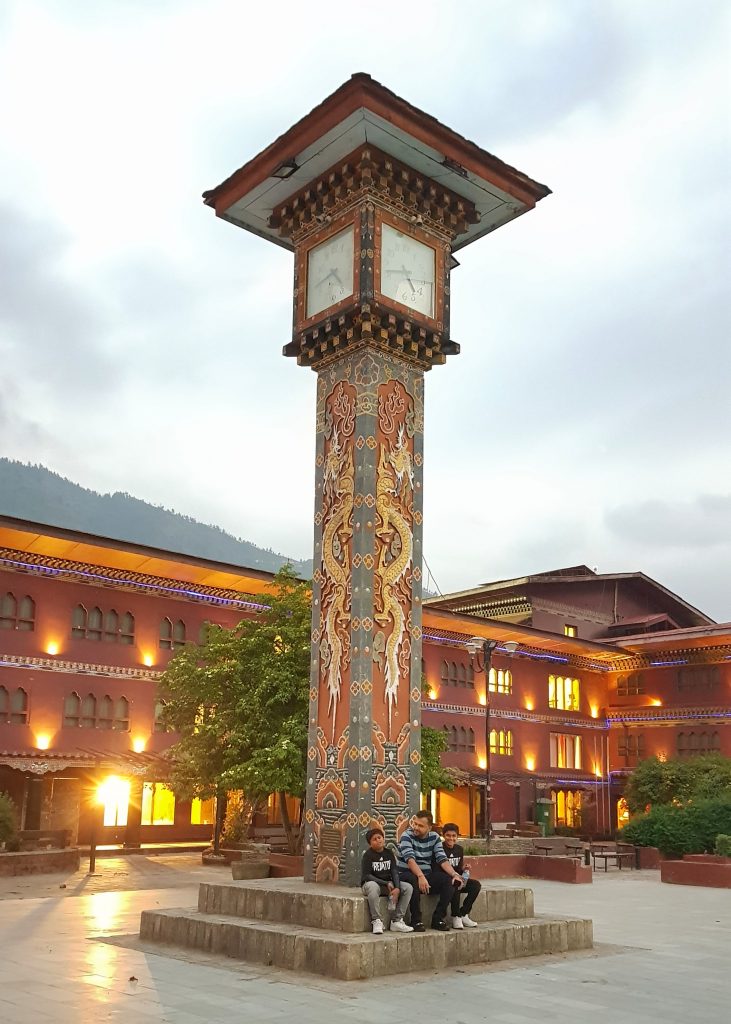
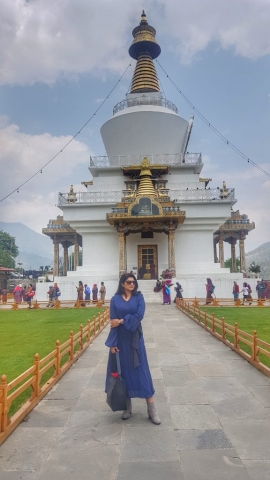
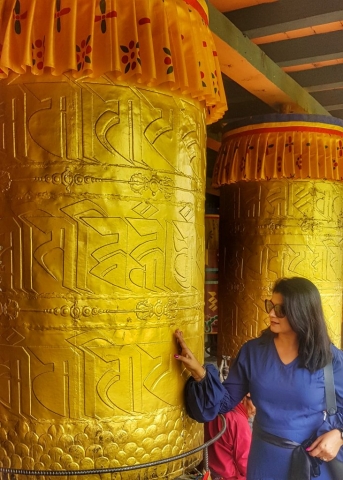
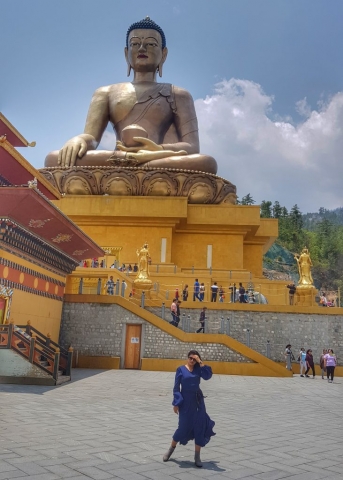
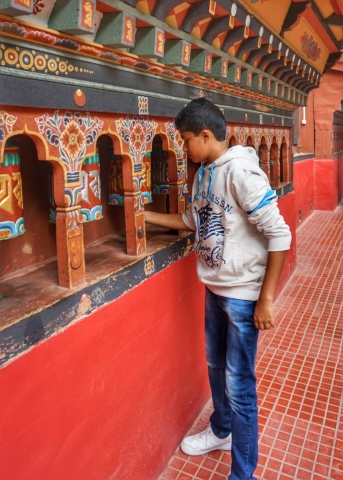
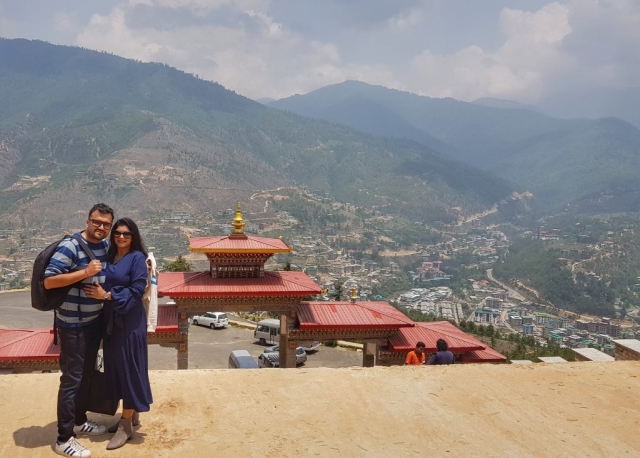
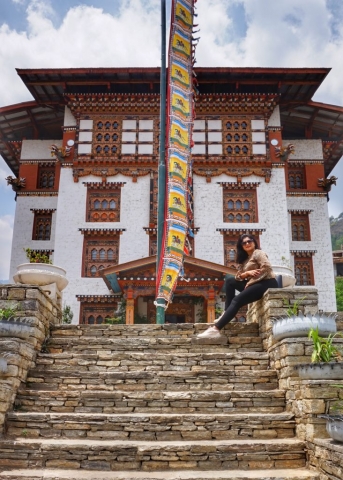
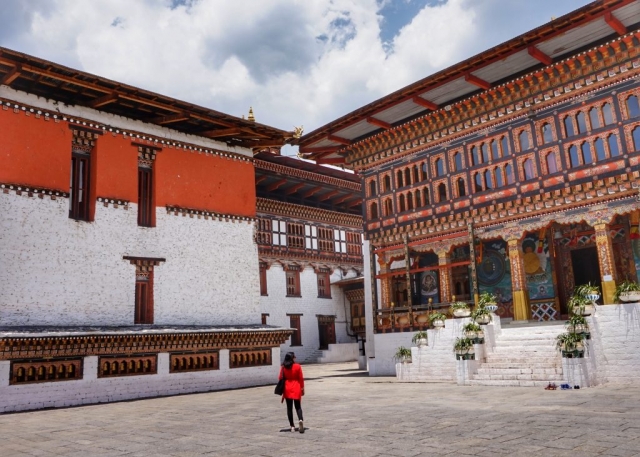
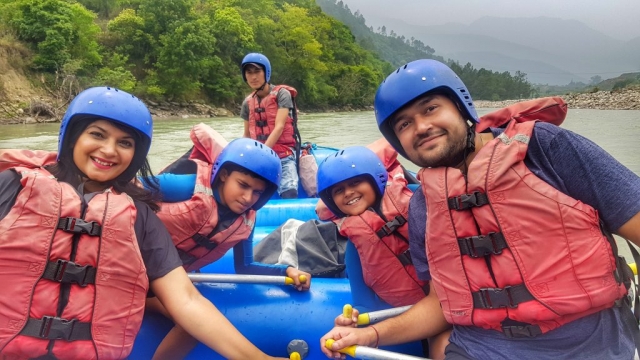
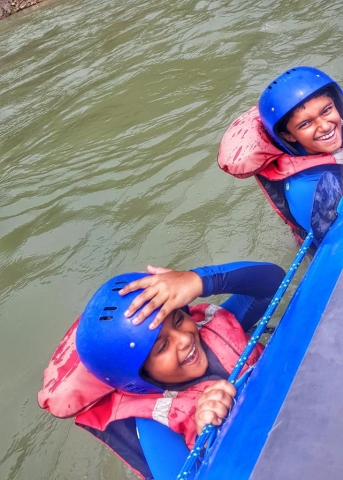
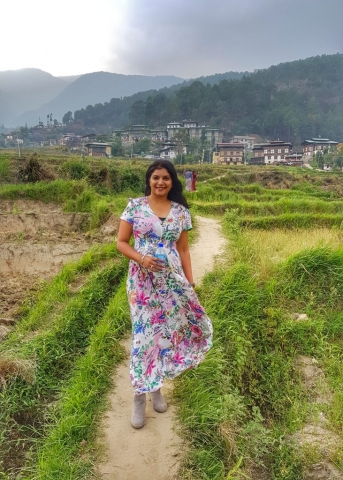
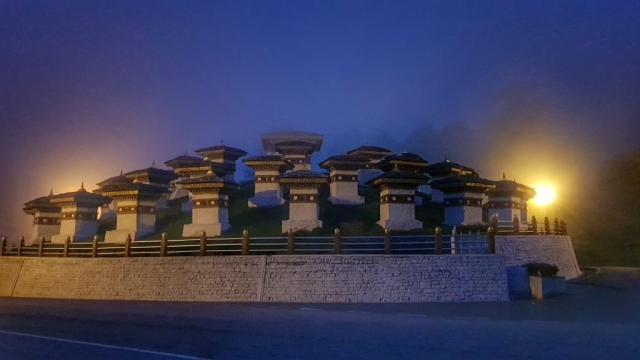
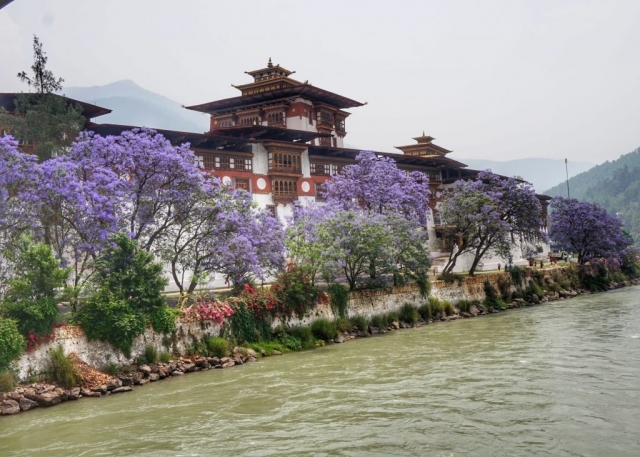
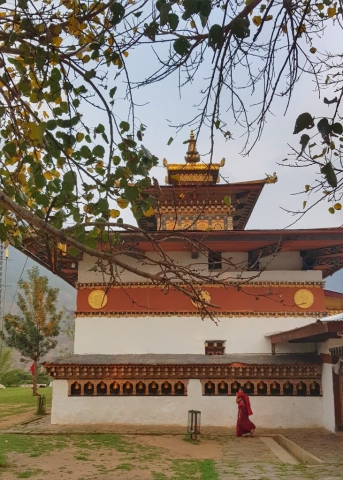
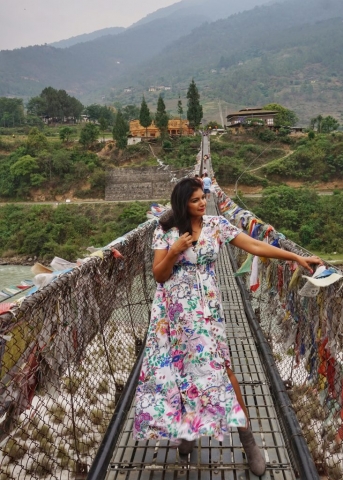
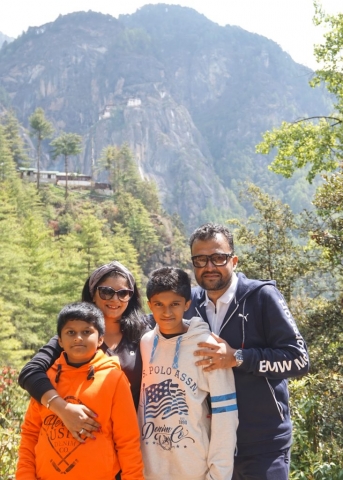
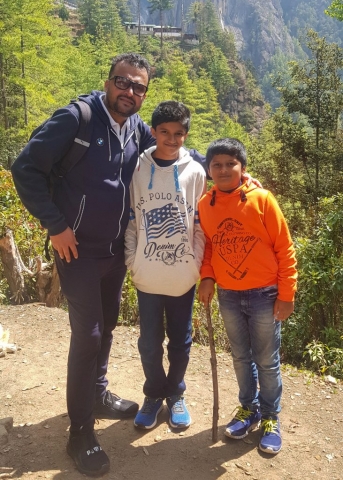
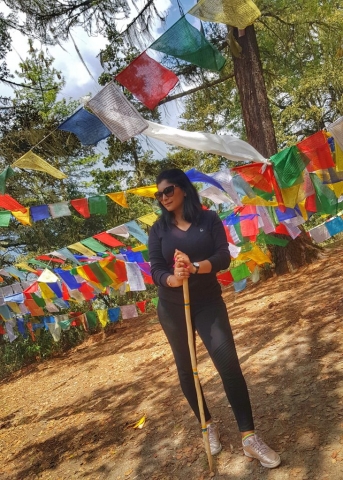
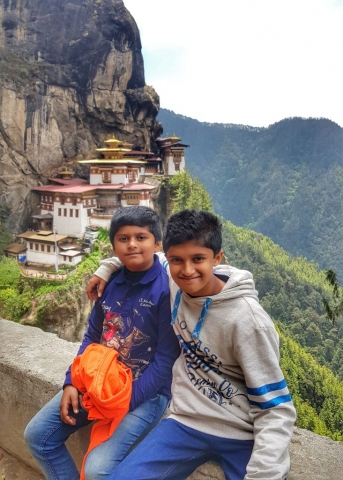
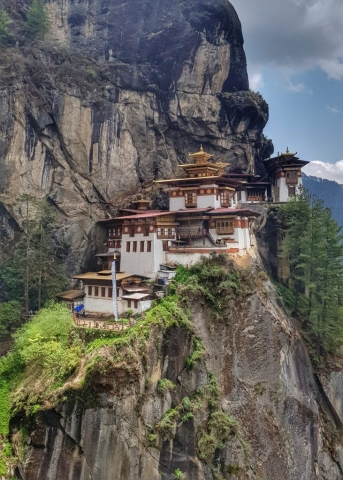
Bhutan is a beautiful country and light on the pocket too.
These pictures remind me the awesome look of Dehradun Uttrakhand. I spent 3 years there. I will surely visit Bhutan too as I like these kinds of places.
I’ve been to Mussoorie before, but not Dehradun. Would love to go there.
Wow! Bhutan looks like a great place to visit. I love all your photos thanks for sharing!
Great travel guide. I have never heard of Bhutan but it looks beautiful
Nice travel tips and wow, each places offering an amazing view. I will definitely add this on my bucket list.
Wow, just wow. I’d never even heard of of Bhutan before this post but what a gorgeous place! That’s so interesting how they limit the number of tourists – I hope one day I’ll get the chance to visit this beautiful and serene place.
I desperately want to visit this place, it looks so magical. It really comes to life in your photos!
Wow Bhutan looks so beautiful! I’ve never been to that part of the world, so would be interested to see it one day. It’s also good to know there are boutique hotels there; I’m a flashpacker who hunts them down wherever I travel!
Hi,
I am planning to visit Bhutan. In that connection wanted some ideas & suggestion for the same.
Could you please let me know how did u travel i.e. individually or thru some tour ? How did u apply & got permit for touring in Bhutan ?
Is it compulsory to book tour thru travel agent or guide or we can plan our self ?
We got our tickets and guide/driver booked through a travel agent. You can also book it all yourself if you’re a resident of India / Bangladesh / Maldives. Btw, we always travel individually on all I international trips…I do all the planning and reservations etc.
Hi Khusbu,
Greetings from Bhutan..!
Bhutan Corinthian Tours and Travels http://www.bhutancorinthian.com
Is an inbound Tourism Council of Bhutan registered local tour operator based in Thimphu. This is a one stop solution for your travel package to Bhutan.
We have been offering the tour package for a group of 30-40 people or else we also cater to FIT travelers. To cut the cost of traveling, we always suggest you to travel in a group.
You can travel to bhutan via air from Kolkotta, Bagdogra, Dhaka, Kathmandu, Delhi, Bangkok and Singapore. We charge you the best rates provided by the airlines.
Or you can travel via land through Bagdogra to Jaigaon/ Phuentsholing Bhutan.
For more, please WhatsApp +97517767493 or email : bhutancorinthian@gmail.com
Wow you guys did so much on your trip! The drive from Thimphu to Punakha must’ve still been beautiful even despite the cloudy weather. I going to save this post for references when I visit. 🙂
Wow I love your photos! I’ve always wanted to go to Bhutan and can’t wait to do it soon.
Wonderful places! Nice pictures great story. It felt like I was travelling too by just reading all these.
I’ve never been to Bhutan but i head so much about it when I was in Thailand. I can’t wait to go there.
Oh wow! That is such an amazing place! Thank you so much for sharing your trip. It’s giving me a lot of ideas for when I finally get there.